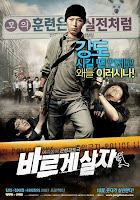Yesterday, my friend Gary Ray put up a blog post about Kickstarter that has proven to be controversial. Since then he's been called illogical, "special," lazy, even "batshit crazy." His ability as a businessman has been maligned, he's been accused of wanting "all the money," as being unable to adapt to change. That last is especially funny for anyone who knows anything about Gary or his store, but I'm not going to do a biography here.
Just what was it that he said that pissed so many people off? Essentially, he said Kickstarter has been successful.
What's wrong with that? Lots of mainstream articles have pointed that out and not been pilloried for it, what was different about Gary's blog post? The problem is that he pointed out the results of that success for the retail game store: they can't sell Kickstarter products anymore.
Why can't they sell Kickstarter products anymore? Gary's critics claim it's because he's lazy, illogical, etc. That's not it though. The reason is that his customers have already bought any Kickstarter game they are interested in through Kickstarter.
To borrow an analogy from the recent election: Gary is Nate Silver, and his critics are the pundits. It's simple math. If you've already sold your product to a store's customer base, then there's no reason for that store to carry your product.
Of course, I've already admitted I'm a friend of Gary's, so how much weight does my opinion carry? It should carry less than Gary's, but since people are dismissing him let me tell you why you should pay attention to mine:
1) I want Gary to be wrong. I want retail stores to be able to carry Kickstarter products because I want them to carry all the games that I like. I'm saddened when I know someone would be interested in a game but I can't recommend it to them because it's simply not available.
2) I'm a customer. I'm the guy that usually buys games through a retail game store, but isn't buying Kickstarter games because I'm backing them on Kickstarter.
Anecdote time. When I bought Sentinels of the Multiverse from the last Kickstarter they had, I played it with some friends. They bought it and played it with some friends. There are now several sets of the game (including expansions) in the local gaming scene as a direct result, most of them sold through a new LGS. From what I can tell, all of those people have now backed the Kickstarter for the new expansion, which means that the LGS has no reason to stock that new expansion when it comes out.
This is what Gary is talking about.
It's not being "lazy" to refuse to stock something that won't sell. It's being smart.
Anatomy of a Pre Order
-
*Wyrmspan* by Stonemaier Games has gone up for pre-order for both retailers
and hobbyists. How do I go about figuring out how many copies to buy? This
on...
2 months ago


















.jpeg)









